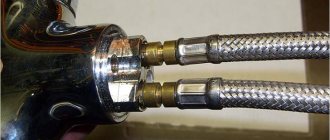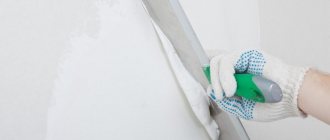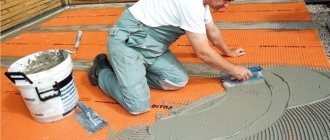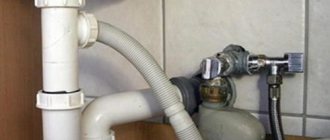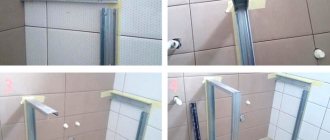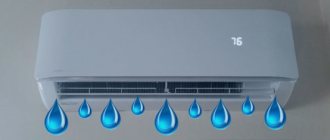What to do if the water doesn’t drain well, and you don’t want to call a plumber who will come who knows when? Of course, you will have to solve the problem yourself, and it is not an easy one. Most likely one of the pipes is clogged with debris. This could be a clump of hair or objects that should not be there at all. Stagnant water brings a lot of inconvenience to apartment owners, especially if the sink does not drain well. This often happens because we don't watch what we throw at it.
Five materials that should not be washed off
Below is a list of what is prohibited from flushing down the sink:
- Egg shells. Because due to the presence of other dirt stuck to the pipe, the shell sticks to it and layers even more debris on itself. It is also capable of scratching pipes with its pointed edges;
- Fat. It instantly sticks to the walls and is very difficult to remove. After they have washed the greasy dishes, they need to pour a few glasses of hot water into the sink. It is recommended to periodically pour a boiled kettle of water into the sink as a preventative measure a couple of times a month. Boiling water helps grease to leave the pipe walls and not accumulate on them, which prevents pipes from clogging;
- Coffee grounds. The risk of clogging the pipe with it is quite high, so it is better not to take unnecessary risks, but to pour the remaining coffee into the trash bin;
- Flour. By itself it does not pose a danger, but in contact with water there is still some danger. As the flour settles on the surface of the pipes, it mixes with water and acquires a sticky consistency. With the help of which other debris can easily be attached to the pipe;
- Paper. Some types of paper are not able to get wet quickly, which often causes poor water flow in the sink.
Poor water flow can also be caused by problems with the siphon. Perhaps yours is too narrow or curved; this means that debris cannot move along it and gets trapped in some of its parts. Debris accumulates in this area and eventually forms a plug, preventing the water from draining.
Rust may be the culprit if you have old pipes that haven't been replaced in a while. Rust accumulates and grows from year to year, thereby narrowing the lumen of the pipe.
As you can see, there are many reasons why a bathroom or sink does not drain well. We figured out the reason, but what next? After all, it’s not enough to just understand what happened; you need to start taking some action to solve the problem.
Water seal
Looking at the structure of the underwater system to the sink, you can see the following. A pipe extends down from the sink, on which the “elbow” is located. A water seal is formed in this very place. A certain amount of water accumulates there and cannot flow out into the pipe on its own. This design is designed to prevent odors from the drain pipes from escaping and filling the kitchen through the hole in the sink.
Now you should pay attention to the corrugation. The fact is that when it is positioned in a certain way, another water seal can be created. It looks roughly like the following photo.
Here you can see that the corrugation sags quite low. This prevents the water from completely pouring into the pipe. Due to the fact that two water seals are located one behind the other, an air lock is formed, which prevents water from fully passing through the drainage system. In fact, a similar problem can be detected even by sound. When the tap opens and then the water drains very slowly, you can hear gurgling sounds at the end. This will be a clear indicator that an air lock has formed.
Cleaning methods
So we got to the main thing, how to clean our pipe. There are several different methods, choose the one you like. But sometimes you have to combine them, since it is impossible to achieve the result using any one option.
Mechanical method
For this you will need a plunger. If you don’t have it, go to a hardware store or market, where you can buy it for a small amount. The plunger acts like a vacuum. Before using it, you need to fill the sink with hot water and then place the plunger in the area of the drain hole and press it firmly against it.
This will ensure the plunger is firmly attached to the drain. You will need to apply some force by pressing the plunger handle several times one after the other, this needs to be done quite intensely. After these steps, remove the plunger. If you see that the water has begun to pass, it means that you did everything correctly and everything worked out.
It often happens that the clog in the sink is quite severe and a plunger alone cannot help. In this case, you will need a cable. This is a long cord made of metal with a handle at its end. Be prepared for the fact that physical strength will be needed here; a woman most likely will not cope here. The cable must be inserted into the drain hole and slowly carefully pushed down. If you feel any obstacle under the cord, then pull it towards you a little, and then push it down again.
If the cable still does not pass after several such attempts, then this may mean that the problem has been found - the blockage is here. And then comes the time for the most difficult manipulations. The cable must be gradually pulled out by turning it in reverse movements. To quickly get rid of the blockage, you can also add hot water to the pipe. After you have completely pulled out the cord, you need to try again to enter the pipe at a longer distance; if you succeed, then the blockage is cleared.
At the end of the procedure, turn on the hot water so that it washes away all the remaining debris. Don’t forget that you need to wash the cable, do it carefully, as a large amount of smelly debris has accumulated on it.
But what to do if you have neither a cable nor a plunger? This is where a screwdriver and wrench will come to the rescue. You will just need to unscrew the nuts and take out the siphon, place it on a previously prepared surface and clean the debris that has accumulated in it. Then screw the cable back into place, while checking all joints to ensure that water does not leak out through them.
Your vacuum cleaner can come to your aid. Turn it on, place the hose against the drain hole (for a tighter fit, you can wrap the hose with film). Do not immediately turn on the vacuum cleaner at high power; it is better to gradually increase it throughout the procedure. After this, you can check whether the water is passing through.
Use of special means
Household chemicals, there are a lot of such products now, there will be plenty to choose from. Why are they so effective? They contain substances that can dissolve dirt and grease adhering to your pipes. Such products are in the form of gel pastes, various liquids and powders. When choosing a powder, keep in mind that it can also settle on the walls of the pipes and lead to additional clogging.
In order to break through a pipe using chemicals, first of all you will need to wear gloves, since all products are very aggressive and can damage your hands by burning them. You need to pour powder or gel into the drain hole and wait the amount of time indicated on the package. Then run hot water into the sink and observe the result.
Folk remedies for cleaning pipes
A popular method is to use baking soda. Mix it with water and pour it into the sink. For a stronger effect, you can also use a plunger. You can start by pouring a glass of baking soda into the drain and pouring vinegar on top. When baking soda interacts with vinegar, foam is formed, which helps clean debris from pipes.
Aspirin tablets can help. Just throw them down the drain and cover them with vinegar. Thick foam will immediately begin to form, so that it does not flow out anywhere, cover the drain with a towel. You can also use citric acid, fill the whole bag with boiling water and pour the resulting mixture into the sink.
Solution
For convenience, it is advisable to disconnect the corrugation from the drain pipe. You can once again make sure that a certain amount of water has actually accumulated there. Now a simple trick is done that solves the issue of draining water in seconds. The corrugation should simply be straightened. When straightening it, it is necessary to reduce it in size so that it does not sag. It is then inserted back into the drain pipe and positioned so that the water can flow out directly. It should look like the photo below.
When all the manipulations are done, you can make sure that the water completely leaves the sink.
Found a violation? Report content
What to do to prevent the sewer from getting clogged
You already know what not to throw down the drain, but there are also some other precautions. You need a mesh screen for your sink so that debris will not be able to get into the pipe. The cause of the blockage may be poor quality water that remains on the surface of the pipes. To avoid this, you need to install a water filter at home. Clean your pipes regularly. To do this, it is not necessary to use chemistry; you can use ordinary well-known folk methods.
How to clear clogged pipes with a plunger
- We tightly plug all overflow holes in the sink with a wet rag to block the passage of air and provide a hydraulic column.
- Press the plunger against the drain hole, then sharply pull it towards you. We repeat these steps several times to thoroughly “stir” the cork and break it into small pieces.
- We check the result by releasing a small stream of water.
- Let the hot water flow for a few minutes so that the plug goes down the drain safely.
Tips:
- If you don’t have a plunger at hand and the blockage is not too complicated, you can replace it with a glass or a rag. The steps are the same: press it against the drain and pull it out sharply.
- If you have a two-section sink, then you need to have two plungers and use them at the same time. That is, when cleaning the drain in one bowl of the sink, you need to close the drain in the second. This will create more suction force. If there is no second plunger, then close the second drain hole with a damp cloth and press it with your hand.
If the blockage is still not detected
If after completing all the procedures you see that the water is not draining well, but there is no blockage and you cannot find it, then the problem is not in your pipes. Perhaps this is a problem with the public sewer or the neighbor's. In this case, it is best to contact the staff of the utility service that services your home. They should send a technician to deal with the general sewer system.
Currently reading
- We repair chips on the bathtub with our own hands
- Installing faucets to an acrylic bathtub - easy with your own hands
- Simple reasons for hot water meters fogging
- We create a water leakage control system using improvised means
Removing clogs with soda
Regular soda can help you in the fight against operational blockages:
- Take a glass of soda and pour it into the drain hole;
- Now add a glass of vinegar there, which will enhance the effect of soda;
- Wait 15 minutes for the chemical reaction to complete;
- Pour a glass of hot boiling water, then open the tap and let the tap water run.
enhance the effect of soda by adding 5 tablespoons of washing powder or bleach to it. For a better effect, you can pour not boiling water into the drain hole, but fresh potato broth. It will help eliminate the unpleasant smell of sewerage.
You can also
use Alka-Seltzer anti-hangover tablets instead of soda. They are used in a similar way to baking soda and vinegar. Using tablets, you can remove a blockage in the pipe, and in addition to this, remove the unpleasant odor of sediment accumulated in the drain hole.
The above remedies are effective not only as a means to fight quarrels, but also to prevent their occurrence.
Chemicals for cleaning sinks
Preparations for clearing blockages are available in the form of liquid, gel, powder or granules.
Chemicals for clearing clogs.
The principle of their use is the same:
- Liquid chemicals are poured into the sink opening and left for several minutes or hours.
- The granules are poured into the drain, a small amount of water is added and left for the time specified by the manufacturer.
- At the final stage, the pipeline is washed with plenty of running water.
Under the influence of alkaline and acidic compounds that are part of household chemicals, all types of organic matter dissolve:
- fatty deposits;
- lime deposits;
- leftover food;
- fruit and vegetable peels;
- hair.
Manufacturers place detailed instructions on the packaging of their products, which indicate the purpose, composition, method of use and safety measures.
Before starting work, you should carefully study this information and remember the following precautions:
- Do not shorten the exposure time of the drug, otherwise it will not have time to completely destroy the blockage.
- Do not use the product to clean plumbing fixtures and pipes for which it is not intended.
- When working with household chemicals, follow safety precautions and wear protective equipment - goggles, gloves, a respirator. If aggressive substances get on the skin, they can cause a burn; if they come into contact with the mucous membranes of the eyes, they can cause irritation and vision problems; if they inhale toxic fumes, they can cause poisoning and accompanying symptoms (nausea, vomiting, dizziness, headache, surges in blood pressure).
To combat blockages, buyers choose chemicals that, in most cases, are able to unclog the sink the first time:
| Release form | Names of household chemicals for removing blockages |
| Liquid | Mole |
| Gel-like | Mister Muscle, Sanox Clean stock, Deboucher active, Tiret turbo, Kloger Turbo |
| Granular | Anti-clogging, Bagi Pothan, Chirton Clean drains, Krotex, Mister Muscle, Mole, Floop |
However, chemicals are powerless against objects of inorganic origin that fall into a drain or sewer pipe.
Liquid cleaning agent Mole for sink blockages. Mister Muscle cleaning gel for clogs. Kloger Turbo is a gel-based cleaner for blockages. Granular cleaning product Mole
.
Gel-like cleaner for removing clogs. Bagi Pothan granular sink cleaner. Cleaning granular for blockages Chirton Clean drains
.
Tiret turbo gel-based sink cleaner
.
Deboucher active removes clogs from the sink.
The water in the kitchen sink does not drain
A lovingly made renovation in the kitchen, carefully selected interior decor elements, beautiful dishes - in the morning you usually don’t want to leave your cozy nest. So you went out into the kitchen in the morning, prepared to make yourself a cup of coffee and some... What is that unpleasant smell coming from the sink? Let's let the water through - that's right, the water doesn't go away! Instead of morning bliss, we have a clog in the kitchen sink, what should we do, call a plumber or try to deal with it ourselves? The answers are in our article.
First, let us reassure you that most blockages can be eliminated on your own , without calling specialists. There are several methods; if in your case one of the selected options does not turn out to be effective enough, you can use another. Also, at the end of our article, we’ll talk about preventing clogs in the kitchen sink.
Who is to blame and what to do?
Two eternal Russian philosophical questions are quite applicable to our situation. First , check whether there is a special mesh on the sink drain that does not allow food debris, large fractions of vegetable peels, hair and pet hair to freely penetrate into the sewer pipe and form such a delicious plug there, mixing with fat.
If there is no mesh , only you are to blame, how to remove the blockage - urgently go to the hardware store for a miracle mesh.
But there may well be a situation where the fat washed off from the dishes remains on the walls of the sewerage elements and catches the smallest food debris and so on. A clog forms, just not so quickly, not once a week, but once a year , and then one day, not a wonderful day, the water stands in the sink, and the plastic mesh, on which so much hope is placed, drifts on the surface of the water.
What should I do? Let's roll up our sleeves and get down to business.
But the owners are not always to blame; let’s list all the causes of blockages:
- the fine litter already mentioned above (food remains, fat, threads, hair);
- corrosion of pipes (typical of old housing stock);
- defects in the operation of the sewer system (improper installation of the siphon, depressurization of the pipeline, etc.).
In our article we will analyze options for action for the first, most common reason. If old pipes are corroded, they become brittle - in this case, they should be replaced with more modern building materials (in a plastic pipe, for example, there will be no such deposits).
How to fix
Inside the bathroom
We first determine the location of the blockage. If water does not drain from the sink, but does not linger in the bathroom, the sink siphon is clogged. When there is a bad odor coming from your bathtub drain and strands hanging off the crossbar, the U-flap or corrugation is likely clogged.
If the water drains at first and then stands, it may be a riser. With a combined kitchen and toilet sewer system, proper functioning of the toilet indicates a clogged wiring inside the room.
There are three cleaning methods:
- hydraulic;
- mechanical;
- chemical.
Hydraulic “emergency” is carried out with a plunger; at the initial stage it is usually possible to break through the plug. The plunger allows you to clean the system by alternately creating a vacuum - excess pressure by a compressible rubber valve. The liquid, together with the dirt, rushes under the kvach by inertia. Hair caught on the crosspiece is removed with a crochet hook.
Close the overflow hole tightly with your palm (or a wet rag) for efficient operation of the kvacha. To prevent the rubber valve from sucking in air, immerse it halfway in water.
Plungers for sinks and toilets are sold; the latter have a tapering nozzle. Plumbers have powerful piston ones in their arsenal, however, this is not a panacea, since the joints of the plastic wiring cannot withstand excess pressure. Specialists use high-pressure units for hydrodynamic sewer cleaning:
Mechanical cleaning is combined with using a plunger. They use wire hooks, polymer brushes, and devices for winding threads. As a rule, a steel cable is used during partial disassembly, otherwise it is easy to break through the corrugation. The cargo cable and steel wire (“steel wire”) are inferior to the plumbing cable, wound in the form of a flexible shaft with a cross-section of 10–16 mm.
Adviсe:
Accessories:
The equipment listed above helps to temporarily restore patency. The issue can be radically resolved by dismantling the clogged unit. To clean the flat siphon:
- Loosen the union nut connecting the flat elbow to the neck fitting.
- Unscrew the nut connecting the adapter to the outlet or corrugated hose connected to the sewer.
- Remove the elbow along with the adapter (it is acceptable to leave the adapter).
Removing the flat elbow
- Disassemble the assembly by unscrewing the coupling nuts, clean and rinse.
- Check the permeability of the outlet and the area behind it with a wire. The folds of the corrugation trap dirt, so take it out and rinse the sleeve.
- Replace stretched conical seals. Reassemble in reverse order.
Assembling and disassembling the siphon:
Leaking joints are untwisted, dried, coated with silicone sealant, assembled, and the composition is waited for complete hardening according to the instructions on the tube.
The chemical method is more of a preventative measure. Factory-made products are effective against grease, but are powerless to dissolve scale; they will not overcome a ball of hair; the restoration of patency will be temporary.
Be sure to wear protective gloves! Follow the instructions on the bottle label regarding the dosage of the drug, exposure time, and safety precautions.
Do not rely on craftsmen’s recipes, especially those containing acids: excessive concentrations of solutions will damage gaskets, damage the coating of plumbing fixtures, and pose a health risk.
Notes on the device design
Bottle and tubular U-shaped models are designed for sinks; the former are more convenient to maintain. Bathtubs are often equipped with compact U-shaped flat ones. For cheap corrugated siphons, the shutter is installed by bending an accordion accordingly; the design is small-sized, but unreliable. A rigid connection with wiring is preferable to a flexible corrugated hose, but requires precise installation.
Pipe U-shaped.
Bottle
The bottle model does not require complete disassembly; just unscrew the settling tank. Leave a gap between the end of the vertical pipe and the bottom of the tank, otherwise deposits will quickly fill the gap. The distance is adjusted by moving the body along the pipe (for adjustable structures), fixing the position with nuts.
Don't forget to place a basin or bucket under the sink before starting work.
Unscrew the bottom.
Disconnect the sleeve.
We remove the body.
We wash it and put it back.
Sewer riser
In five-story Khrushchev buildings, inspection hatches are provided on the first and top floors; tall buildings were equipped with inspection hatches every three floors. Local cleanouts were also installed - outlets closed with plugs.
The risers of the current plastic network are equipped with revision tees with threaded covers. Similar smaller devices are installed near problem areas: walled up, hidden, sharp bends.
Briefly about the revisions:
If there is no hatch, it is advisable to disconnect the toilet corrugation to gain access to the riser tee. If there is a hard connection, you will have to remove the toilet or clean it through it.
Connecting the toilet using rigid bends.
Clean with a special cable with a handle. The tip can be equipped with hooks that hold fibers, strands, bags, and rags when pulling. It happens that they attach a pointed blank (for example, the peak of a jackhammer), break through the blockage, periodically lifting it and letting it fall freely, it is convenient to operate from the attic:
From the apartment proceed as follows:
- Remove the threaded inspection cover (flanged for cast iron).
- Lower the cable until it stops against the obstacle.
- Holding the whip with your hand, simultaneously rotate the handle.
- They impart a reciprocating motion to the wire to break through the barrier. Periodically remove and remove any trapped debris.
There is a danger of pushing the congestion lower. Then you will have to ask the residents of the lower apartment to open the audit, pushing the blockage towards them and removing the contents by hand. To prevent it from falling further, first plug the inner hole with a rag tied from the outside. Carefully monitor the movement of the spiral; it happens that repairmen pierce the plastic or run the wire towards the neighbors.
They produce mechanized cables with a set of attachments:
The worst option is a cast iron riser laid inside concrete panels. You can only get to it through repair hatches or from the attic. Wet walls of the entrance between floors indicate poor permeability of coupling joints: sewage stagnates and leaks through loosely caulked joints. For repairs, it is necessary to dismantle the brickwork covering the technical openings in the entrance.
An example from experience: “metalworkers” pulled out a drain pipe in the attic, dumping slag into the riser, and the cast-iron sewer system became tightly clogged. It was not possible to break through the jam with a cable or a load. The plumbers dismantled the masonry of the opening in the entrance, cut out a pipe segment with a grinder, and removed a bucket of slag. The hole was closed with a rolled sheet, welded with an electrode using cast iron.
External reasons
The sewage system in the basement or manhole usually becomes clogged due to the fault of careless residents who wash away unusable preserves, rags, bags, and construction waste. The latter can indirectly point to the culprit of the emergency.
The approximate location of the blockage is sometimes visible from the joints leaking under high pressure. Don’t try to do something yourself, call the management company. A clogged well is filled with sewage flowing out, and it’s time to call an emergency.
Call a plumber
In situations where you cannot cope with the blockage on your own, you will have to turn to the help of a plumber.
Also, the intervention of a specialist will be needed when the problem with blockage is related to the drainage system in the apartment or to the riser in the house.
The cost of the service is determined by the complexity of the problem and the necessary cleaning work. If replacement of units or individual parts is required, the customer pays for them separately. On average, in the capital, clearing a clogged sink will cost from 500 rubles.
Mechanical cleaning of sewer pipes
At home, you can mechanically clean pipes with a plunger or plumbing cable.
The plunger is a time-tested invention, inexpensive, and lasts a long time. You should buy a separate plunger for the kitchen; for hygiene reasons, you should not use the same one as in the bathroom.
The most reliable plunger is a wooden handle and a rubber pump base; plastic options are not so reliable. How to use it? We install it exactly above the sink drain, make sure that the rubber fits tightly to the bottom of the sink, and let the water flow. Let's take in enough water so that the rubber part of the plunger is under water, press vigorously with all our hearts a dozen times. If the blockage is small, the water will whistle down the drain. It is done!
What to do if your kitchen sink has two sections? Ideally, you should have a pair of plungers and work with them at the same time - this will provide you with excellent cleaning of the sewer system. If you don't have a second kitchen plunger, simply cover the other drain hole with your hand or a rag.
How to clear a clog without a plunger? If you don’t have it on your household, you can imitate its work with a glass, a hand in a rubber glove, or a rag. The principle of operation is the same: close the drain hole, fill with water, and sharply pull up.
Cleaning with a plumbing cable is not as simple as working with a plunger. But you can cope with it too! The cable is purchased at the store and must be used carefully.
The siphon is removed, the end of the cable is inserted there, with rotational movements of the handle the cable is pushed inside the sewer pipe and either crushes the resulting plug, or you take this mass out and throw it away. After installing the siphon in place, run hot water thoroughly. Enjoy the purity and freshness you deserve.
When working with plumbing cable, observe the following rules. The cable must be in good condition, without damage, the handle must be securely fastened to it.
You should rotate strictly in one direction at a measured speed; moving the handle randomly can damage the pipe. If suddenly the end of the cable gets stuck in the sewer, only in this case should you very carefully and slowly turn the handle in different directions until the obstacle is passed.
It is more convenient to carry out this procedure with two people - one regularly rotates the handle, the other controls the cable.
In modern apartments, the entire sewage system is interconnected. Before you start working in the kitchen, take a minute - go to the bathroom, plug the drain hole of the bathtub and sink, then go to the toilet and lower the toilet lid. These simple steps, which won’t take up your time and energy, will help you clean your kitchen sink more effectively.
You can also disassemble the drainage elements under the sink and manually clean each part. Only do this job if you are confident that you can handle it.
Features of cleaning plastic pipes
Cleaning plastic pipes requires special care. Despite the strength, the material from which the drainage system is made is susceptible to mechanical damage and exposure to very high temperatures.
The inner surface of the pipes is quite smooth; with proper installation, blockages in such a system occur less frequently than in cast iron drainage systems. This is explained by the fact that plastic is not prone to corrosion and the adhesion of various substances to the surface .
But during operation, food particles that fall into the kitchen drain can be deposited, causing a blockage. The best options for cleaning approaches are the use of a plunger, the use of home and special products.
